- Home
- Trapping Beavers
- Beavers Build Dams
Why Do Beavers Build Dams?
This post may contain affiliate links so I earn a commission.
Many of us have wondered why or even how beavers build dams?
After all, why would an animal take the time and energy to build such a remarkable structure?
The answer is actually quite simple......food and safety.
Since beavers have short legs and cumbersome bodies, water plays a vital role in their survival by providing protection from predators and access to food.
Throughout history, beavers have evolved into prolific swimmers.
Building a dam in a shallow stream allows a beaver to alter the flow of water, creating large flooded areas known as beaver ponds.
These ponds allow beavers to access food without traveling long distances on dry land.
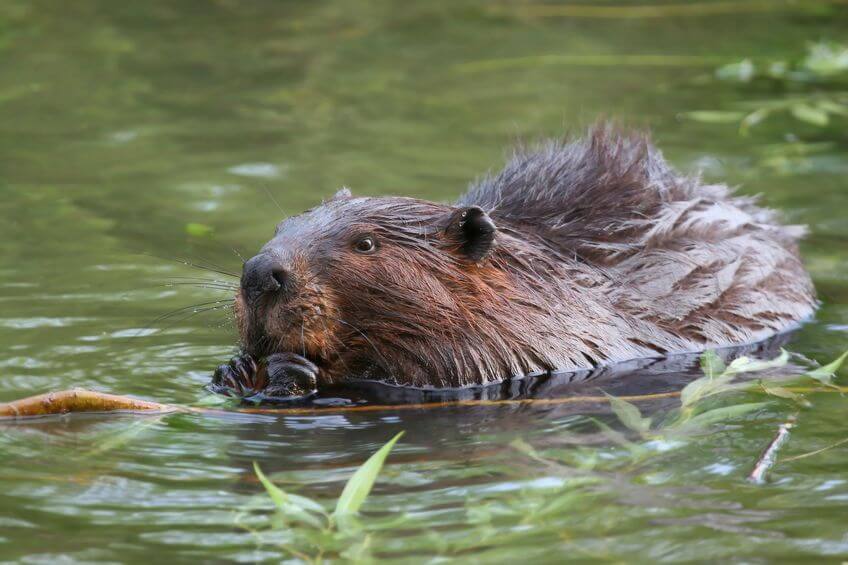
Plus, the standing water allows them to easily float large branches and logs used to build their lodge.
Just as humans move and level dirt to build a house or clear brush and trees to plant a lawn, fruit trees and a garden, a beaver is essentially doing the same thing......changing the landscape to create a better living environment.
How Do Beavers Build Dams?
Beavers typically choose to build a dam in smaller steams that have slow moving water less than 2 feet deep.
Anything larger than this is usually avoided.
Next, they look for an area that's naturally constricted by either stumps, rocks or a man made culvert to make constructing the dam easier.
Beavers are pretty smart and there's no need to do more work than necessary.
Once a suitable location is found, beavers use sticks, rocks, mud and other nearby debris to construct the dam.
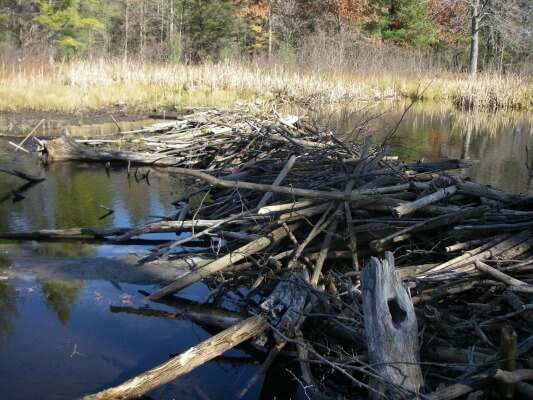
This picture shows a typical beaver dam originally built in a slow moving, shallow stream.
The area above the dam has now flooded and formed a deeper pond that the beavers can now use to access food and build a lodge.
Since the beavers will live in the pond throughout the winter, it's important beavers build dams large enough to flood the pond to a depth that will not freeze completely solid.
This allows them to navigate the pond throughout the entire year, accessing their winter food supply.
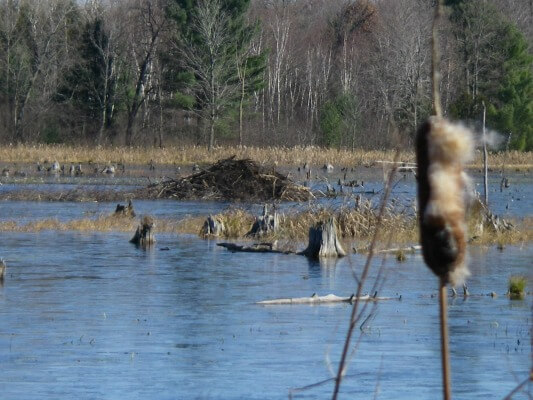
This picture shows the pond above the beaver dam that has flooded allowing the beavers to build a lodge where they now live.
The lodge is built from sticks, mud and vegetation found throughout the pond.
Although many people consider beavers a nuisance animal, the dams and ponds they create offer habitat that allows other animals to thrive.
This environmental impact plays an important role in our ecosystem.
Some of the best raccoon and mink trapping I've ever experienced was on a beaver pond.
The flooded ponds create a great hunting environment for them, containing frogs, small fish and other valuable food sources.
Beaver ponds also make great ducking hunting spots!
Wood ducks, mallards and many other types of ducks love to hang out in the safety of a beaver pond.
Just be careful though if you're wading through a beaver pond.
Beavers create distinctive runs in the bottom of the pond which will be deeper than the rest of the pond.
If you step in one, there's a good chance you'll get water in your waders, or even worse.....go underwater.
However, without a healthy balance beaver ponds can also cause a lot of damage.
The flooding pond will kill trees which leads to millions of dollars lost in the timber industry.
Flooding fields and acreage threatens farmers crops and livestock.
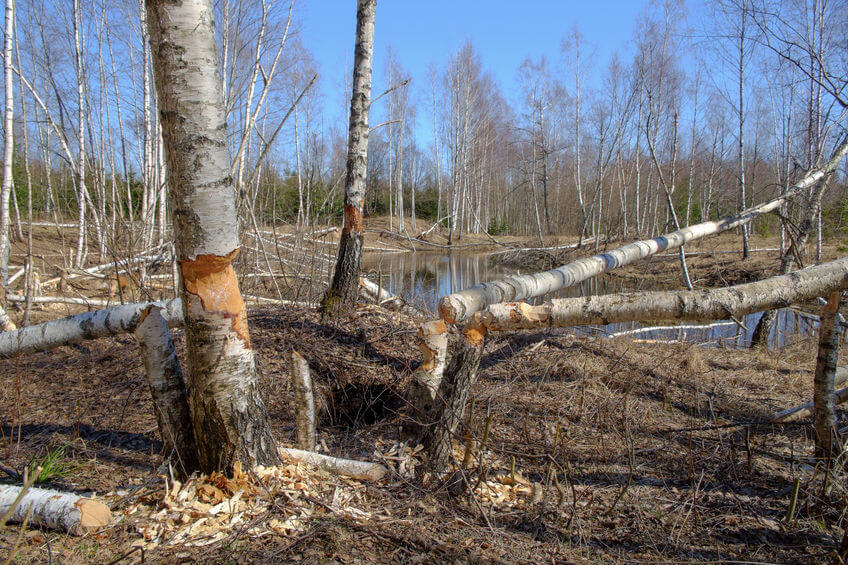
There's also other considerations we need to think about from a public safety standpoint.
Diverted water can cause roads, bridges and culverts to wash out due to erosion.
Trees that have been chewed down by beavers can also fall on power lines and other utilities.
Now, governmental agencies work closely with those affected by beaver damage.
Various methods to control unwanted beaver damage include trapping, installing corrugated plastic beaver pipes within the dam to route water in a specific location, and even using low-voltage electric fences to prevent beavers from entering the land in the first place.
Why Beavers Build Dams - Setting A Trap
If you're an avid trapper or simply a homeowner that wants to remove nuisance beaver from your property, a beaver dam is a great spot to set a trap.
In fact, it's one of my favorite places to make a set!
Beaver love to cross over a dam while moving from one pond to another.
As they cross, they create a well worn path over the dam.
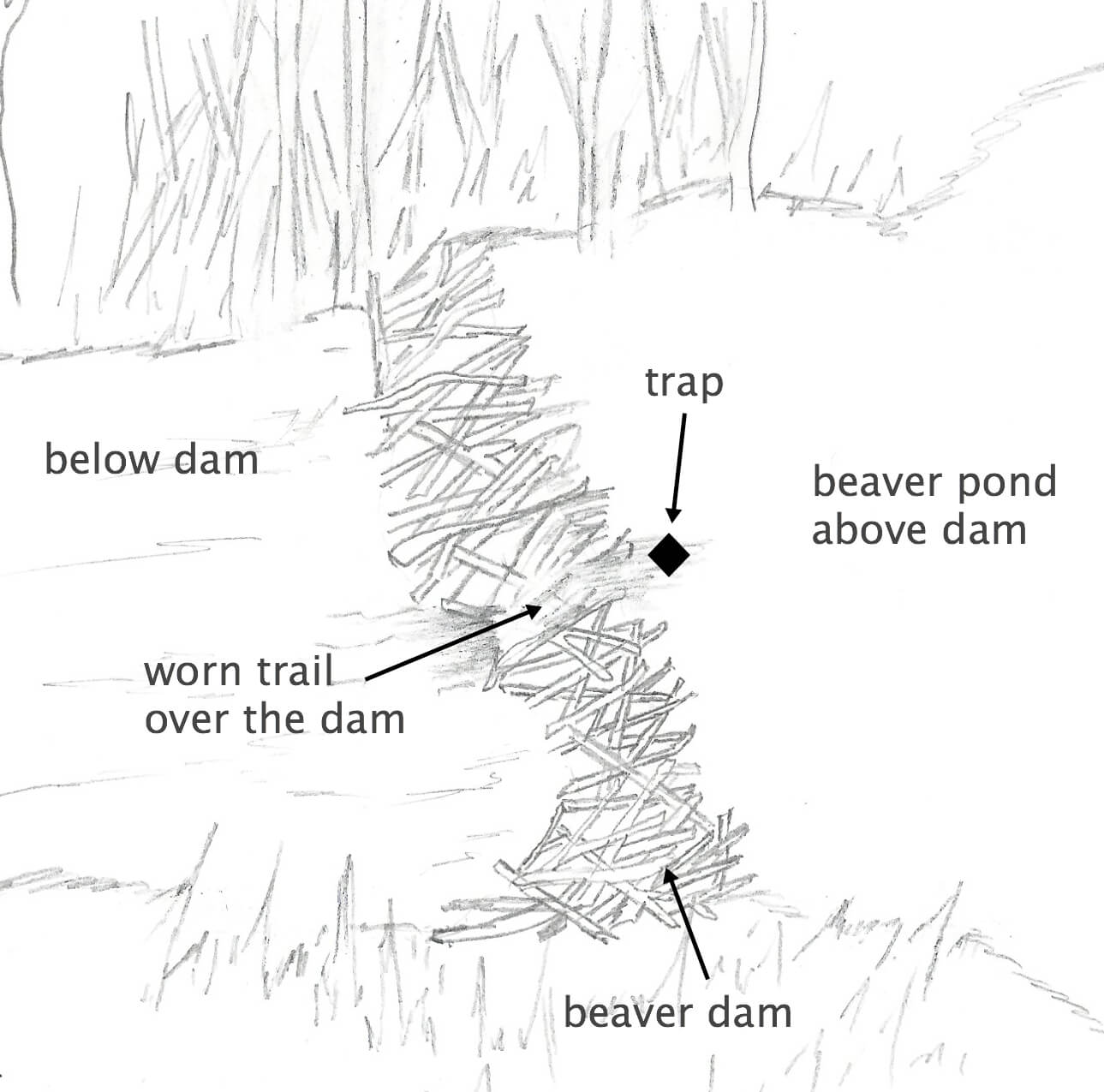
Place the trap on the pond side of the beaver dam.
Typically, you can submerge a foothold trap along the trail which works great.
Just make sure to hook the trap up to a drowning wire or stake to prevent the beaver from twisting out of the trap.
Overall - Why Do Beavers Build Dams
Beavers build dams for food, safety and shelter.
They have a remarkable way of manipulating and changing the environment to meet their needs.
These changes not only allow them to thrive, but it also allows other animals to live in areas that would not be possible without the dams and ponds created by beavers.
Whether you view beavers as a valuable furbearer, nuisance or simply another animal living in the woods, the hard work and tenacity of a beaver is amazing.



